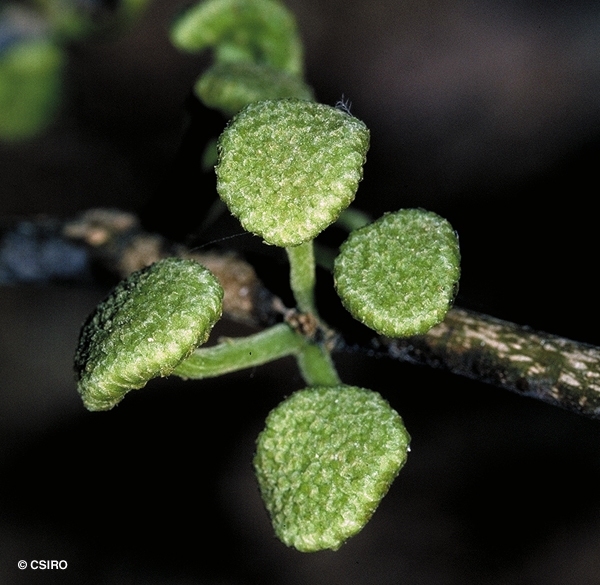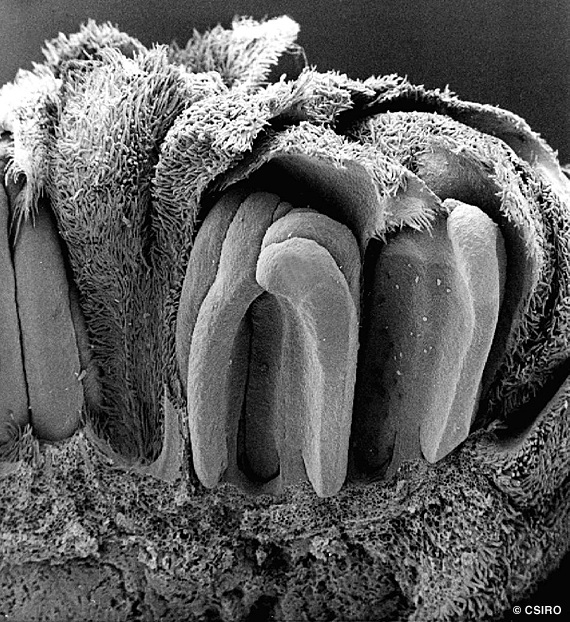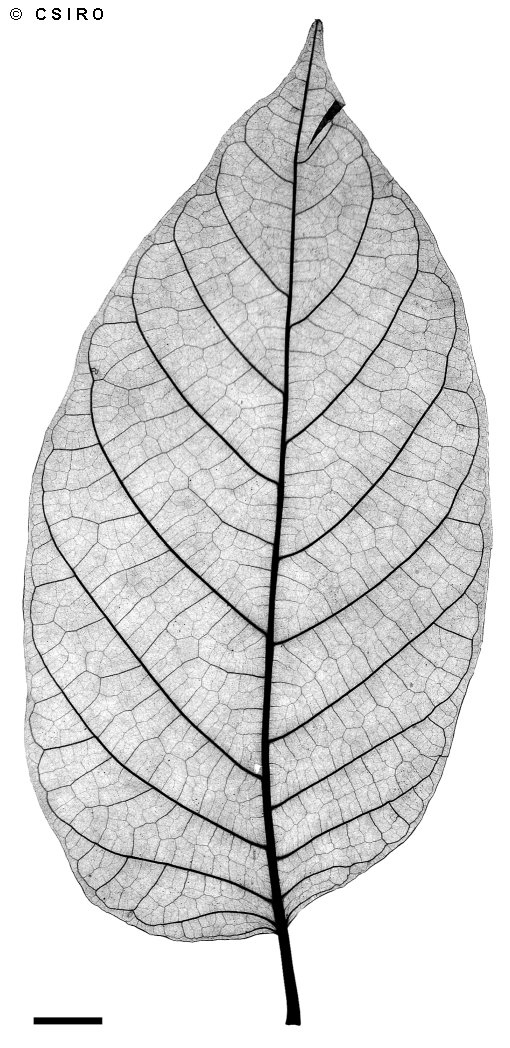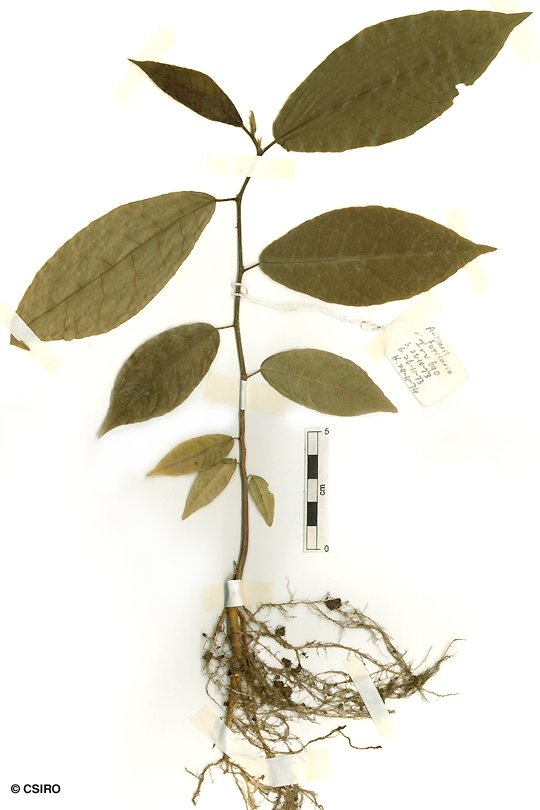Australian Tropical Rainforest Plants - Online edition
Antiaris toxicaria subsp. macrophylla C.C.Berg






Berg, C.C. (1977) Bulletin du Jardin Botanique National de Belgique 47: 939.
Antiaris
Male flowers: Receptacle flat or convex, about 7-12 mm diam. Tepals hairy, obtriangular, about 2 mm long forming a hood over the anthers. Anthers white, sessile or almost sessile, about 1.5 mm long. Female flowers: Flowers subtended by numerous bracts. Style branches or stigmas recurved.
Infructescence variable, about 4 x 2 cm. Cotyledons thick and fleshy more or less equal in size. Radicle very short.
Occurs in NT, CYP and NEQ. Altitudinal range from sea level to 200 m. Grows in well developed rain forest, gallery forest and some of the drier, more seasonal rain forests. Also occurs in Asia, Malesia and some Pacific islands.
The specific epithet was applied to this species because the latex has been used as an arrow or dart poison. The tree is not as dangerous as some of the early travellers tales would suggest but it should be treated with caution.
For some indication of the chemical components of the arrow poisons. (http://www.williams.edu/BSC/RS98html/RepSci98Web- FACULTY.html#Heading90 (17-8-2000)). This species is poisonous. (http://squid2.laughingsquid.net/hosts/herbweb.com /herbage/A1652.htm)





